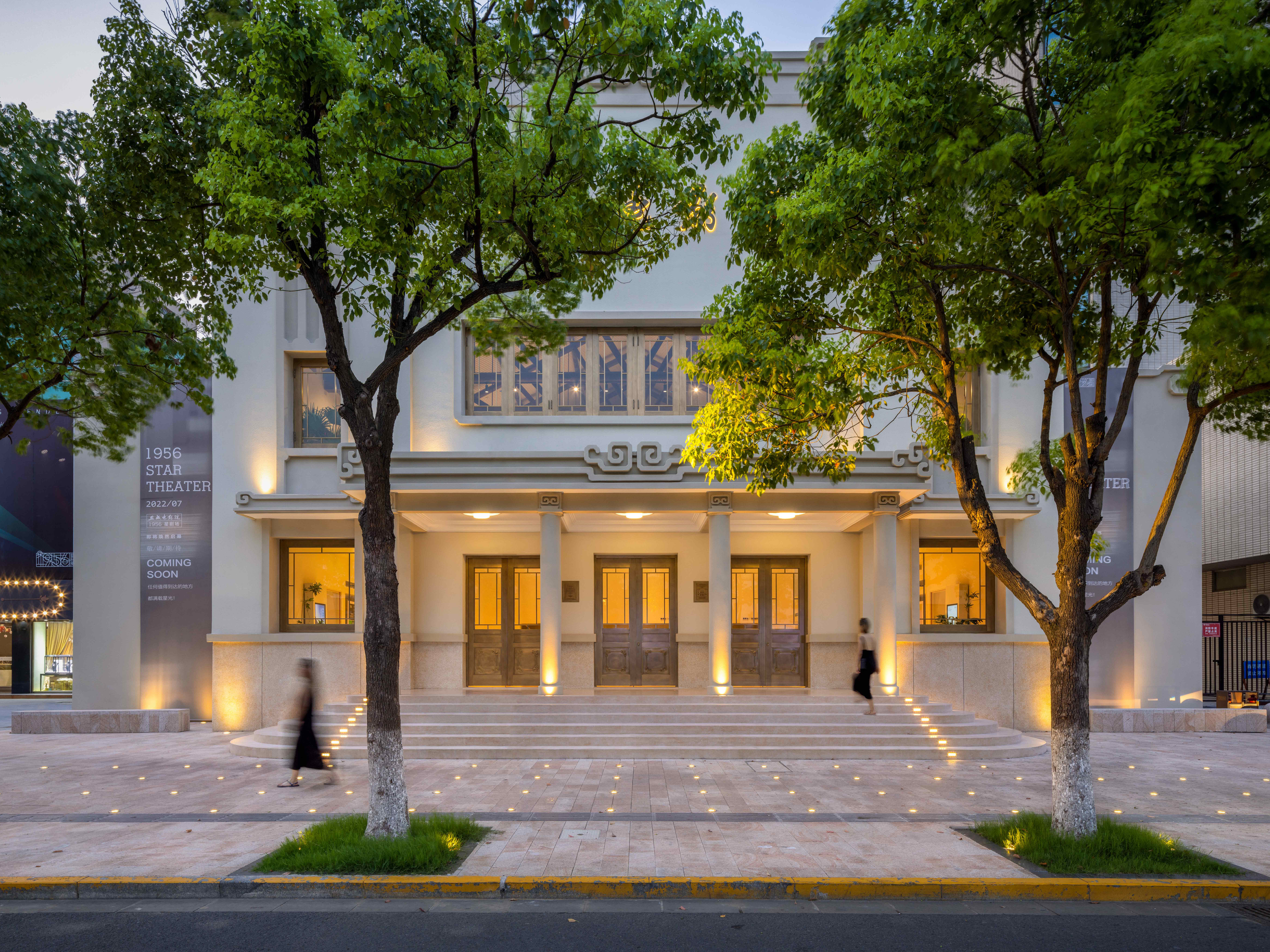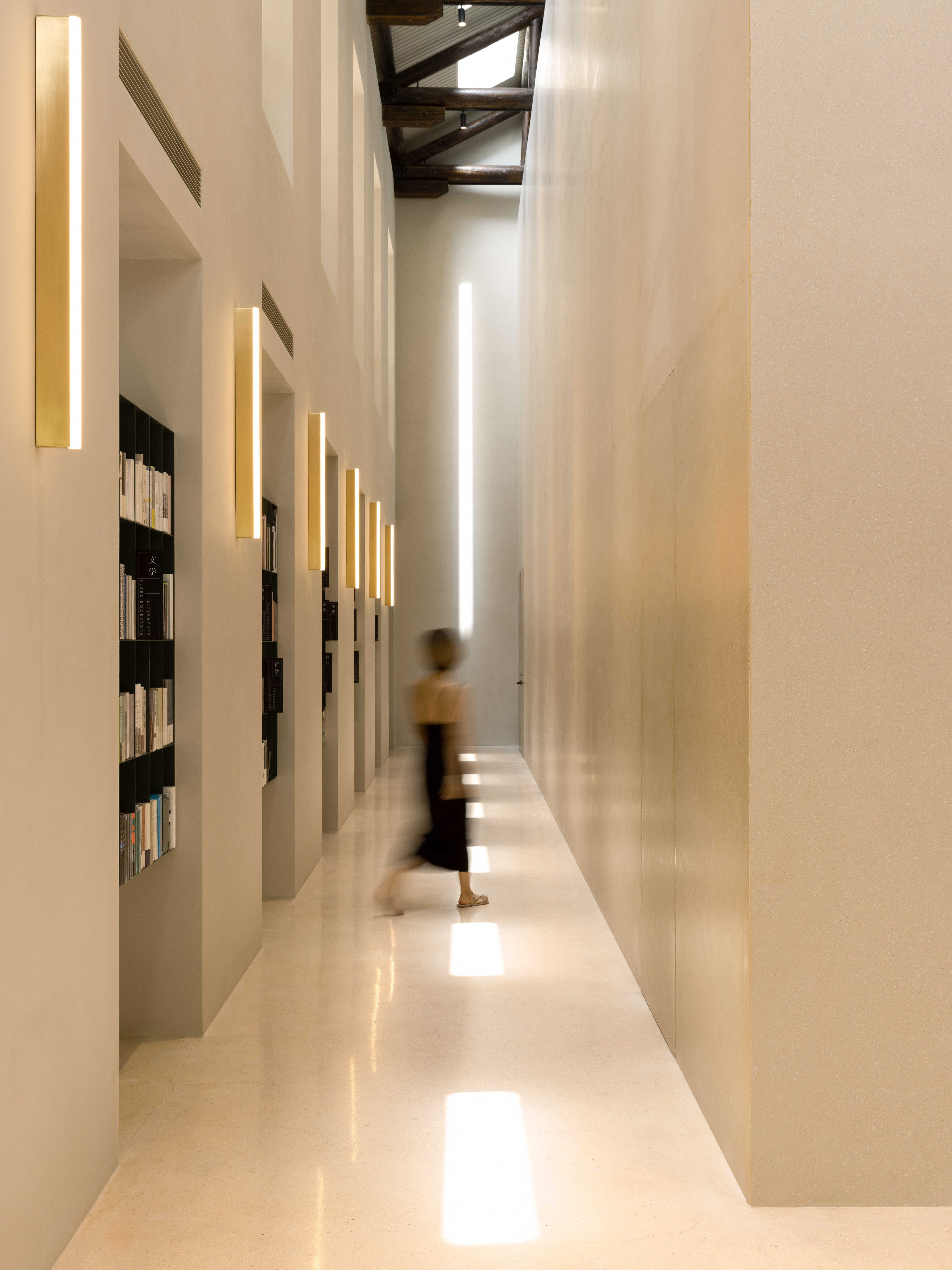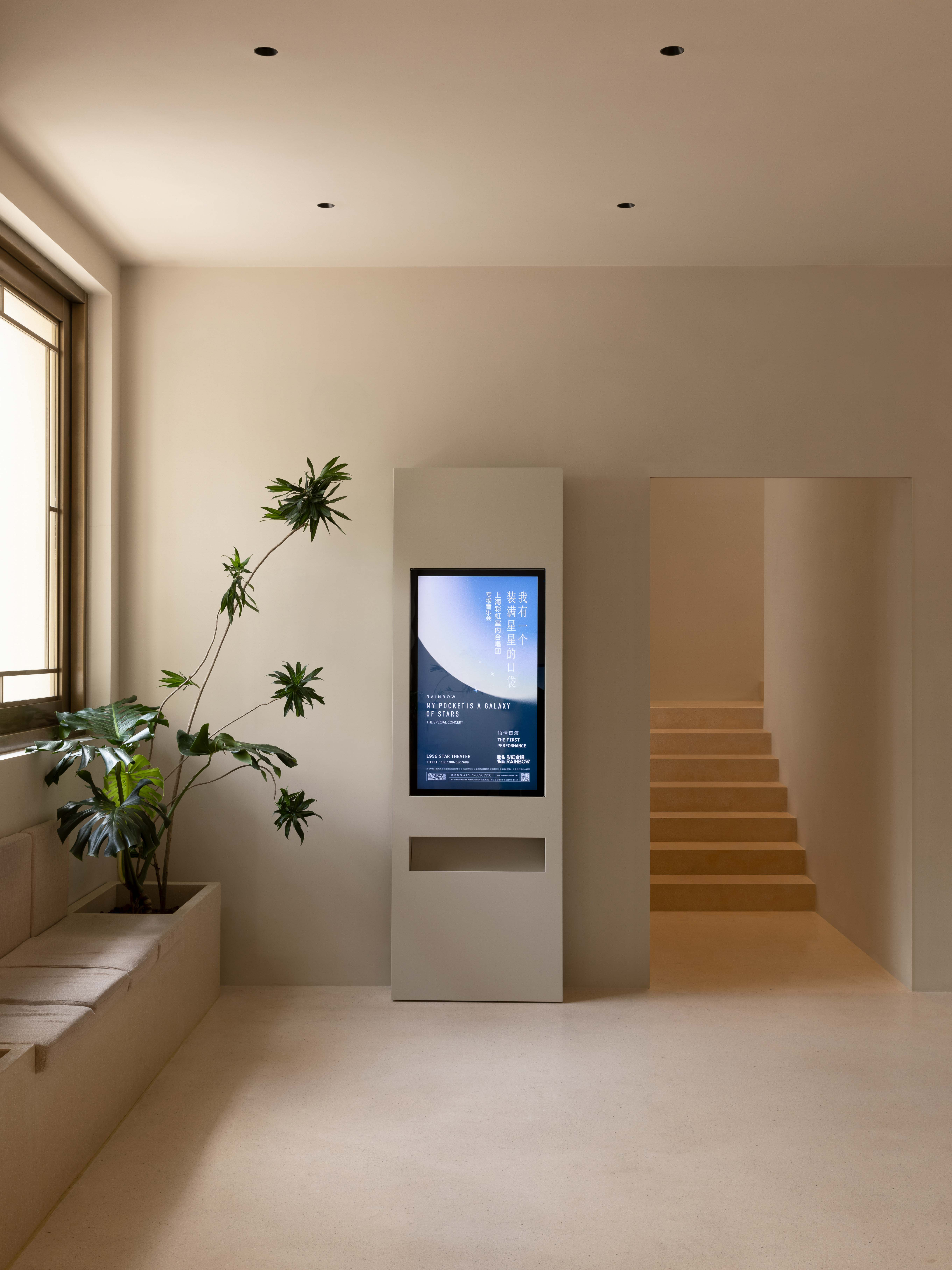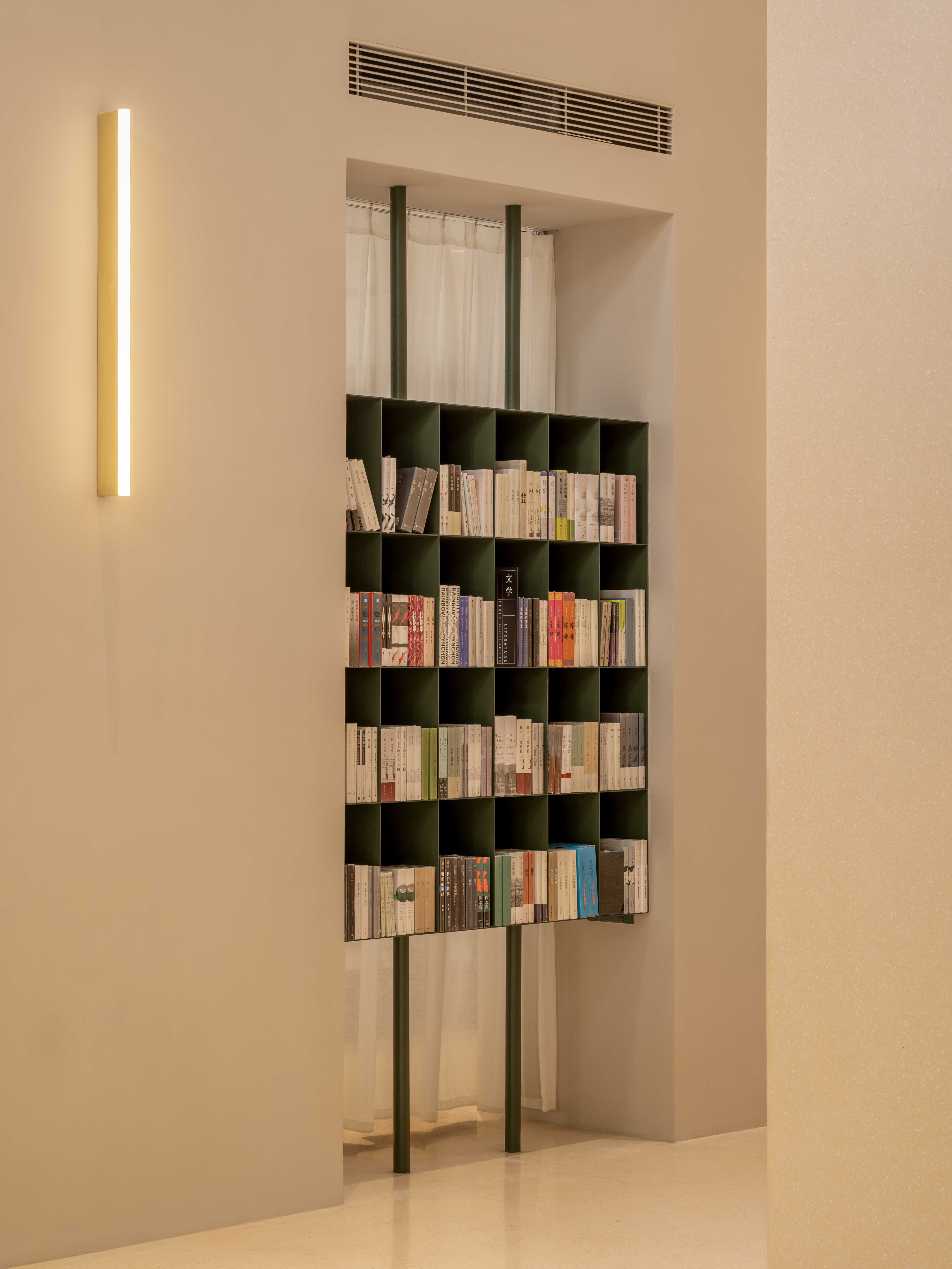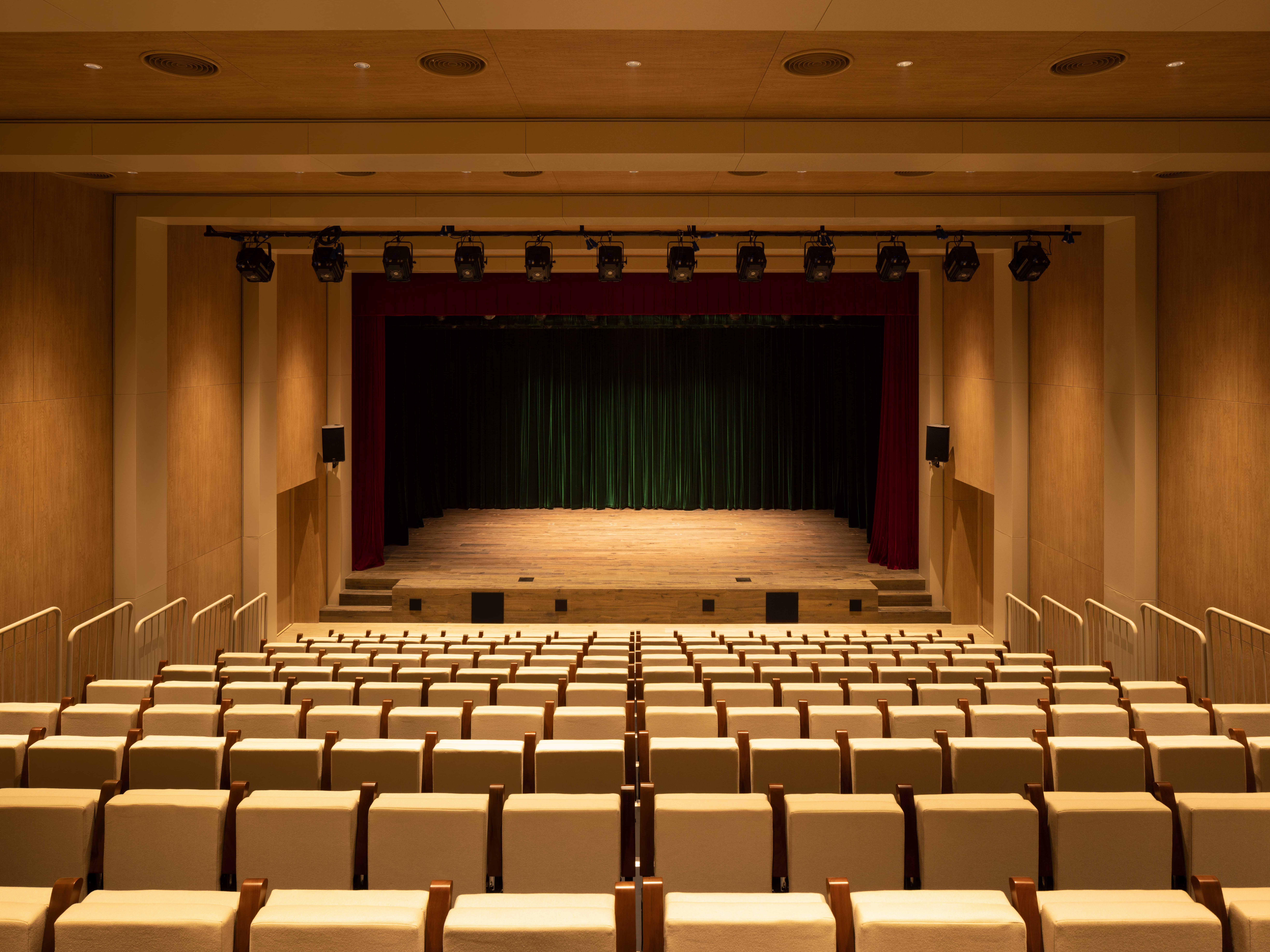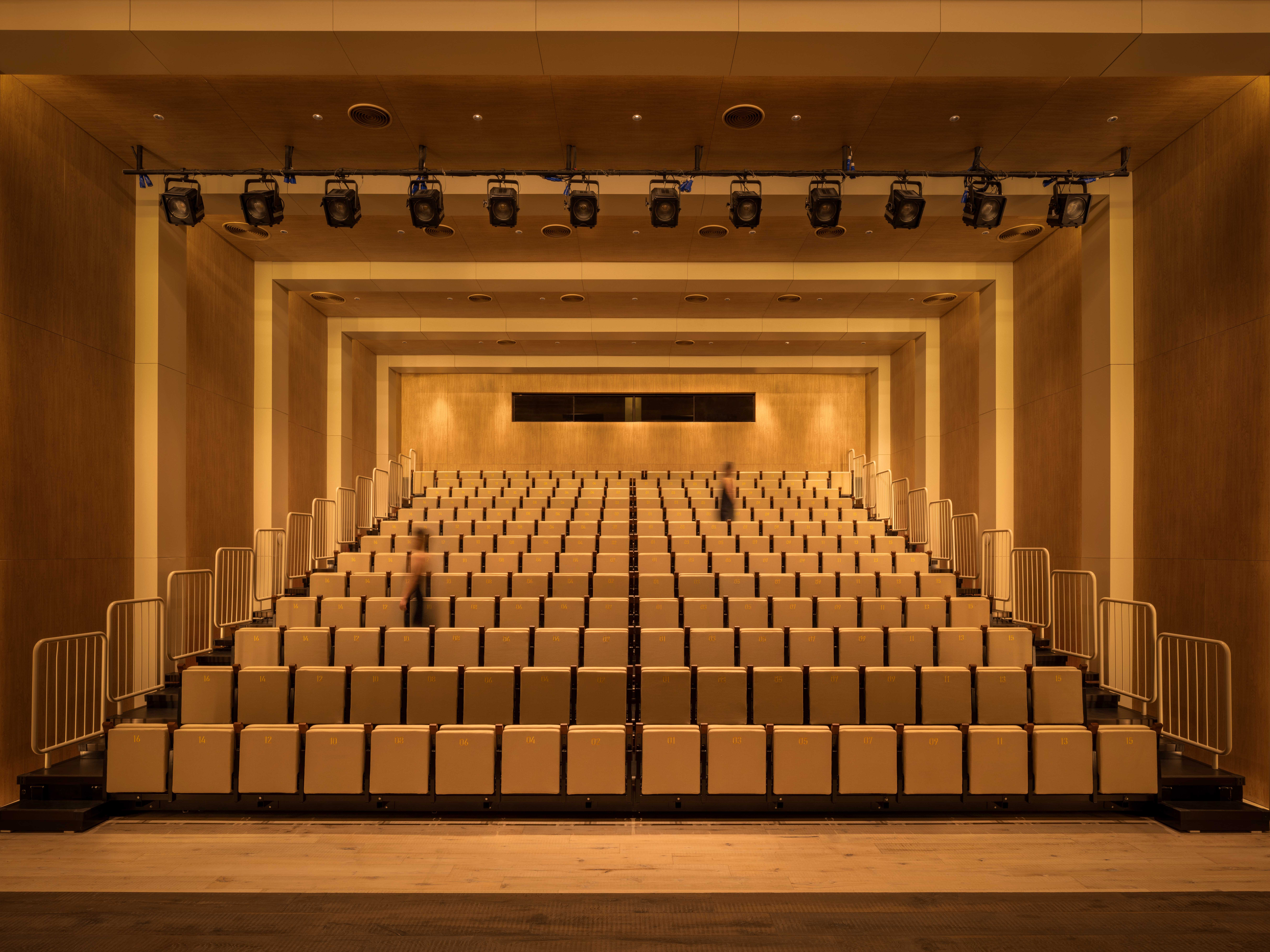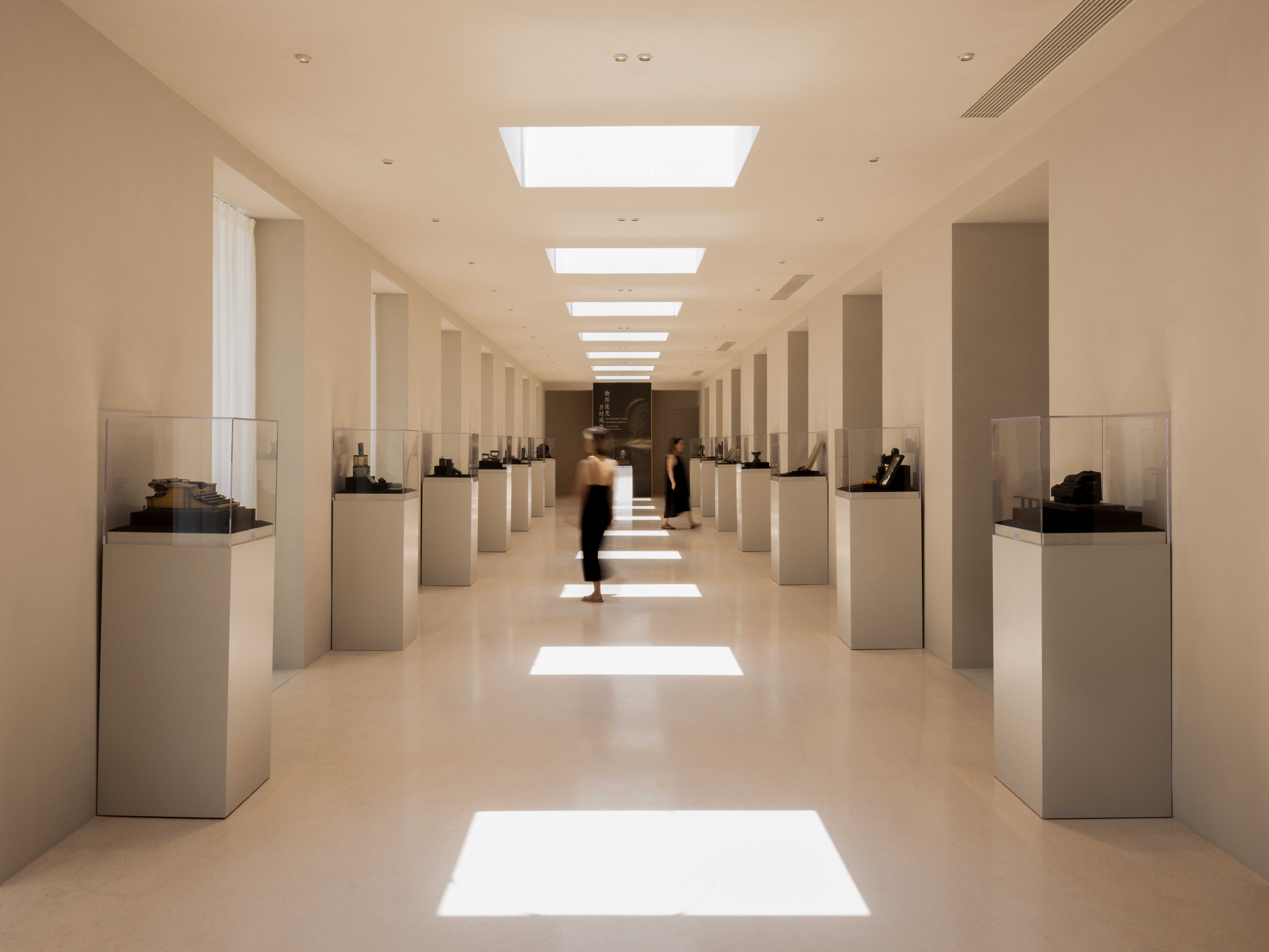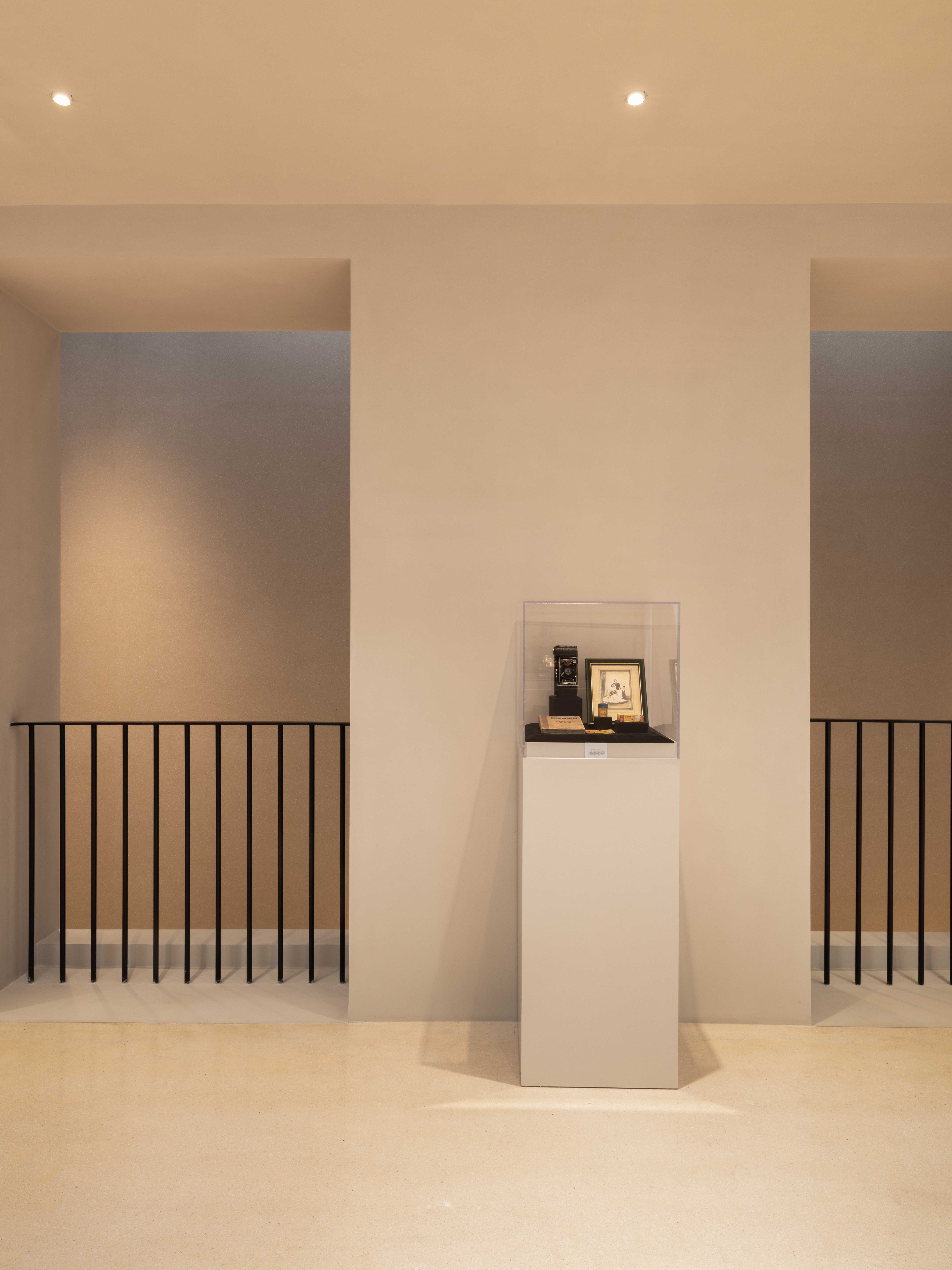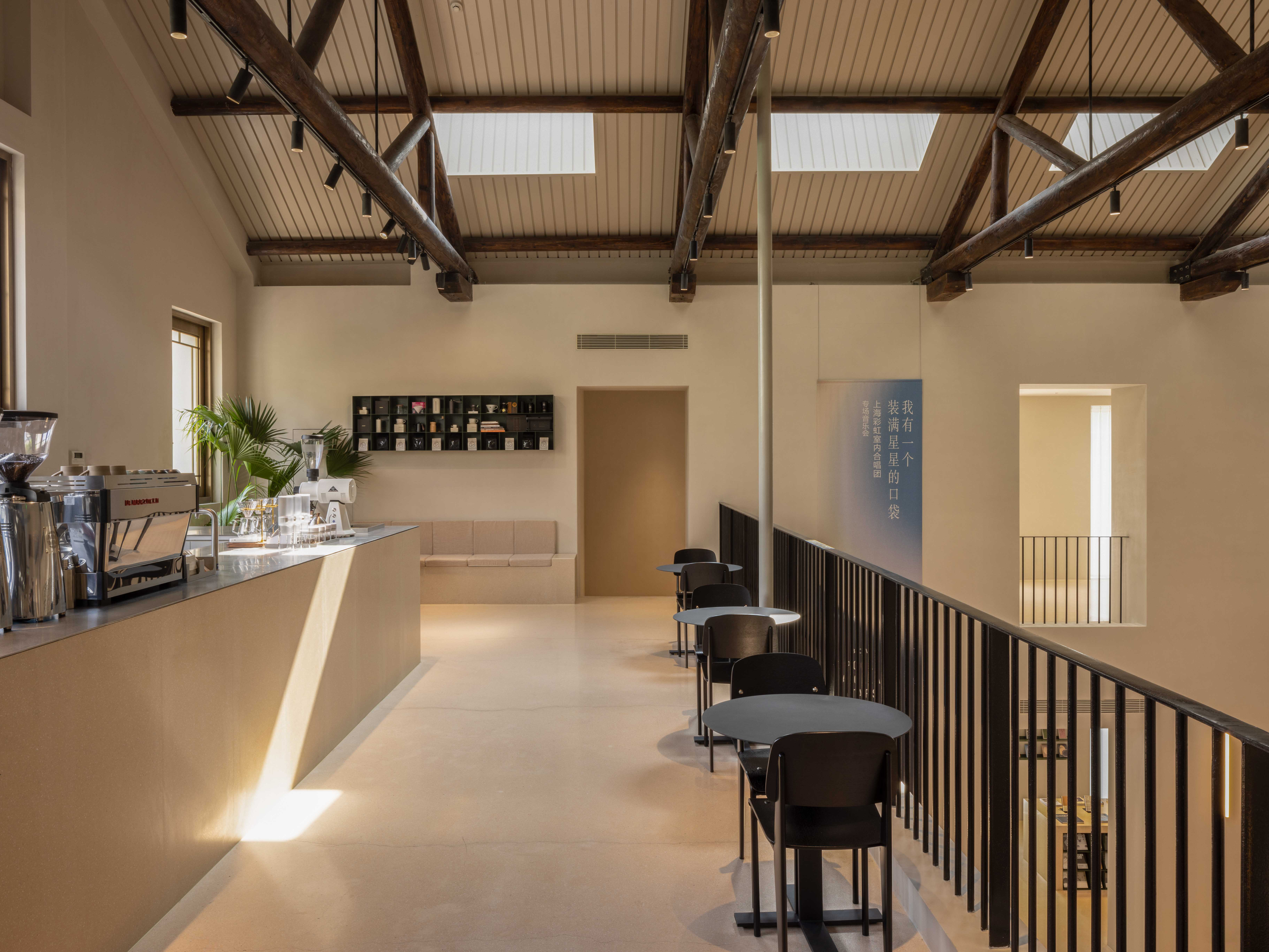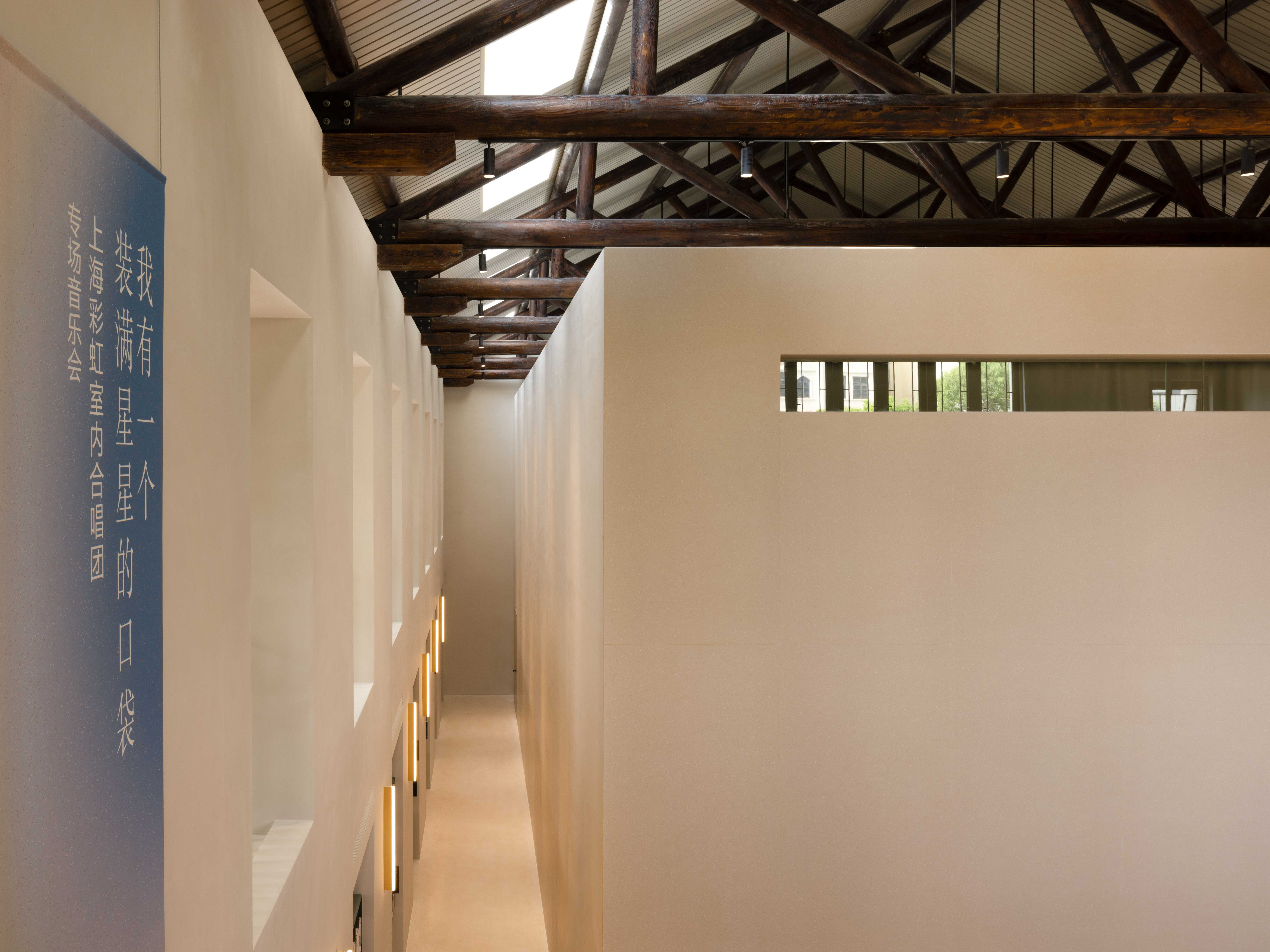
1956 Star Theater
Category:
Government
Clients:
Tinghu District Urban Asset Investment Co., Ltd. Jiangsu
Location:
No. 96 Middle Jianjun Road
Tinghu District, Jiangsu
Gross Built Area (Square Meters):
1155m²
Design Year:
2021.03 - 2021.08
Completion Year:
2021.11 - 2022.04
Photo Credits:
Hu Yanyun
Category:
Government
Clients:
Tinghu District Urban Asset Investment Co., Ltd. Jiangsu
Location:
No. 96 Middle Jianjun Road
Tinghu District, Jiangsu
Gross Built Area (Square Meters):
1155m²
Design Year:
2021.03 - 2021.08
Completion Year:
2021.11 - 2022.04
Photo Credits:
Hu Yanyun
The
1956 Star Theater is located in the bustling Middle Jianjun Road, the center of
Yancheng City, Jiangsu Province. Built in 1956, it was the former Yancheng
Cinema - the first cultural building back in that time.
The original building had undergone two phases of renovation over the 66 years, with a five-meter-wide wing expanding out from both sides of the original plot line. With various uses of retail stores by the previous tenants, the Yancheng Cinema has lost its cultural character. Over the years, it desperately needs to be refurbished. The client wishes we could reintegrate the design and recall the unity of the historical building, fulfilling the functions of theater and exhibition.
The main design challenge is to skillfully restore the heritage by showing respect to the history while appropriately implanting contemporary design language into the building, allowing the new and the old to blend seamlessly/seamlessly, simultaneously creating a vibrant and long-lasting landmark for the city.
According to the historical dossier, we have analysed two significant characteristics of this building: first, it is axisymmetric in the east-west direction, which evokes a sense of ritual; second, the main facade is outlined by an embossed cloud pattern, and wood structures support the interior roof, both features symbolise the architectural style of a specific era at that time.
We carefully identify where the new is to be inserted and where the old should remain intact. While restoring every detail of the original front facade and preserving the existing structures, the two wings are reconstructed in a contemporary design language, humbly attached to the original building. In the interior, we dig out openings in the walls for both floors based on the original columns' positions, extending the openings to the side facades of both wings, and transforming them into exhibition spaces. Under the historical wood roof of the atrium, a modern and solid theater has risen from the ground. The rhythmic flow created by these openings generates a physical connection among the spaces, thus triggering spatial intrigues. At this point, the theater and the exhibition spaces harmonise as a whole, which is axisymmetrical in both architecture and interior, achieving a strong sense of ritual. At the same time, the old and the new integration in the same order and create a dialogue.
In terms of the material expression of the facade, rough-textured paint and exposed aggregate skirting are used to enhance the style of the historic building, and delicate stone paint is applied for the wings. The subtle differences among them are seamlessly coherent. As for the interior, we use plenty of micro-cement paint with rich texture, which corresponds with the historical wood structures in the space; the floor is made of terrazzo which was popular at that time, extends from the outdoor to the indoor, and grows into a solid theater. The continuous flow of the materials deepens the connection between the architecture and the interior.
Upon its completion, the 1956 Star Theater not only carries the performance function and also serves as an urban cultural hall in Yancheng. During the ordinary days when there are no performances, the citizens could still explore the space and feel the fusion of art and culture.
The original building had undergone two phases of renovation over the 66 years, with a five-meter-wide wing expanding out from both sides of the original plot line. With various uses of retail stores by the previous tenants, the Yancheng Cinema has lost its cultural character. Over the years, it desperately needs to be refurbished. The client wishes we could reintegrate the design and recall the unity of the historical building, fulfilling the functions of theater and exhibition.
The main design challenge is to skillfully restore the heritage by showing respect to the history while appropriately implanting contemporary design language into the building, allowing the new and the old to blend seamlessly/seamlessly, simultaneously creating a vibrant and long-lasting landmark for the city.
According to the historical dossier, we have analysed two significant characteristics of this building: first, it is axisymmetric in the east-west direction, which evokes a sense of ritual; second, the main facade is outlined by an embossed cloud pattern, and wood structures support the interior roof, both features symbolise the architectural style of a specific era at that time.
We carefully identify where the new is to be inserted and where the old should remain intact. While restoring every detail of the original front facade and preserving the existing structures, the two wings are reconstructed in a contemporary design language, humbly attached to the original building. In the interior, we dig out openings in the walls for both floors based on the original columns' positions, extending the openings to the side facades of both wings, and transforming them into exhibition spaces. Under the historical wood roof of the atrium, a modern and solid theater has risen from the ground. The rhythmic flow created by these openings generates a physical connection among the spaces, thus triggering spatial intrigues. At this point, the theater and the exhibition spaces harmonise as a whole, which is axisymmetrical in both architecture and interior, achieving a strong sense of ritual. At the same time, the old and the new integration in the same order and create a dialogue.
In terms of the material expression of the facade, rough-textured paint and exposed aggregate skirting are used to enhance the style of the historic building, and delicate stone paint is applied for the wings. The subtle differences among them are seamlessly coherent. As for the interior, we use plenty of micro-cement paint with rich texture, which corresponds with the historical wood structures in the space; the floor is made of terrazzo which was popular at that time, extends from the outdoor to the indoor, and grows into a solid theater. The continuous flow of the materials deepens the connection between the architecture and the interior.
Upon its completion, the 1956 Star Theater not only carries the performance function and also serves as an urban cultural hall in Yancheng. During the ordinary days when there are no performances, the citizens could still explore the space and feel the fusion of art and culture.

